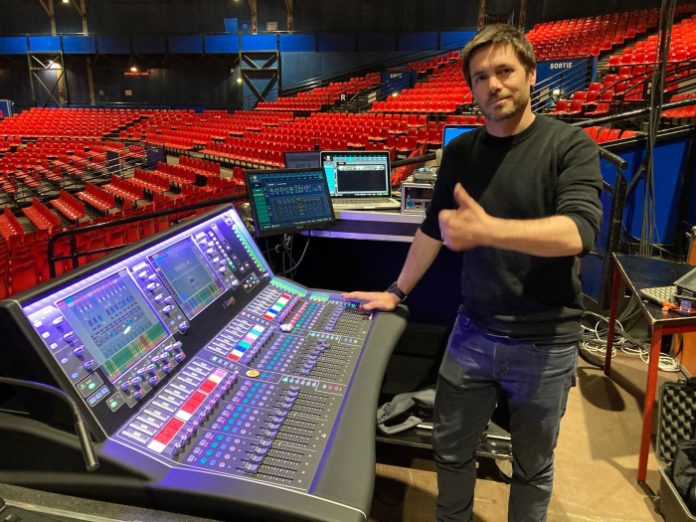
French space-pop group L’Impératrice spent much of 2022 on the road supporting the release of their latest album, Tako Tsubo, with shows taking them across the globe including festival appearances at Coachella and Primavera Sound.
Antoine Guyonnard, the band’s long-time sound engineer, returned to his post once touring became possible again after the pandemic. “When the lockdown restrictions began to ease, we had to work with a smaller, lighter show than normal,” he said. “That’s when I first turned to Allen & Heath.”
For the early shows, Guyonnard called on an SQ-5, a compact 96kHz 48-channel mixer, with a pair of DX168 Expanders deployed for onstage I/O. “We went all over the world with the SQ-5 which I pushed to its limits,” he said. “I loved its audio quality and its size; you can’t get much more compact than that!”
After the first run of dates with the SQ-5, the live show pivoted to a larger scale production which needed a step up in mixer size and channel count. “When we prepared the new show, in a larger format, the choice of dLive was obvious,” he explained. “I had already experienced the power and audio quality of the dLive system on other projects, but for this tour, the most important factors were the scalability with the different MixRacks, Expanders and Surfaces, and above all the power-to-size ratio.”
Guyonnard, who mixes both FOH and monitors for the band, paired a dLive S5000 Surface with a CDM32 MixRack, with additional I/O provided via a pair of DX168 Expanders. Additionally, a Dante card is installed for Virtual Soundcheck with a superMADI card fitted to enable UAD Live Rack integration. For the overseas leg of the tour, taking in the US, Canada and Mexico, the S5000 Surface is swapped out with the ultra-compact C1500 Surface. “This was decisive for us,” he said. “The C1500 allows me to open exactly the same show in a super transportable solution for dates abroad, which are numerous with L’Impératrice.”
With all dLive MixRacks built around the same 128-channel 96kHz processing core, Guyonnard had more than enough power at his disposal to handle both FOH and monitor duties from the one system. “I split important sources, like kick, snare, bass and vocals, to work on the audio specifically according to their destination, whether that’s the PA, IEMs or Wedges,” he noted. “Here again the available resources are more than sufficient to mix our 64 inputs, splits, effect returns, inserts, and so on.”
Guyonnard adds that when he moves from the 28 faders of the S5000 to the 12 faders of the C1500, he calls on one of dLive’s most popular features to ensure he can quickly access any required channels in an instant: “The number of DCAs available allows me to create multiple groups of faders that I can instantly recall as needed, via SoftKey, using the DCA Spill feature. I exploit dLive’s control possibilities quite extensively,” he continued. “The console’s automation is both intuitive and comprehensive, MIDI over TCP/IP allows me to generate control commands to Ableton Live, and to follow automation from it. And thanks to the Embedded Recall function, I can trigger several events from a scene recall.”
When it comes to the mix, Guyonnard finds himself relying on dLive’s zero-latency DEEP Processing and RackExtra FX to do much of the heavy lifting. “I really like the onboard processing and effects,” he concluded. “All the reverbs, the DEEP emulations of preamps and compressors, the ADT doubler, the Dimension Chorus, and a special mention to the Source Expander which replaced all my gates. The new NEQ12 brings me up to sixteen parametric bands available per bus, and what about the sixty-four DYN8s available without adding latency? It’s heaven!”





